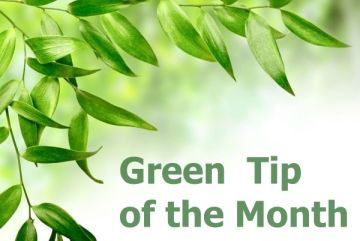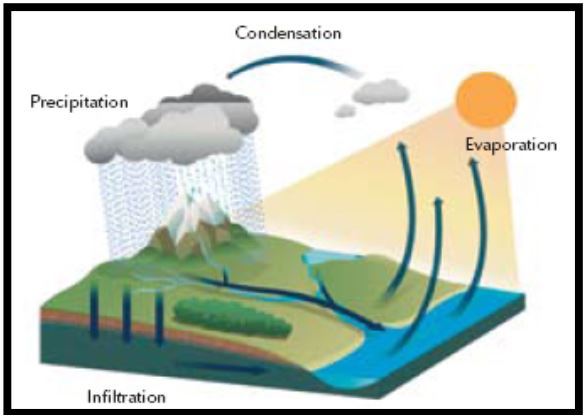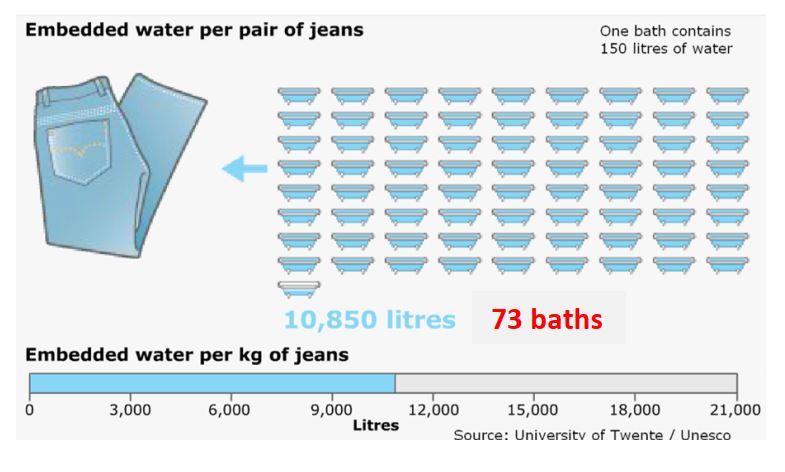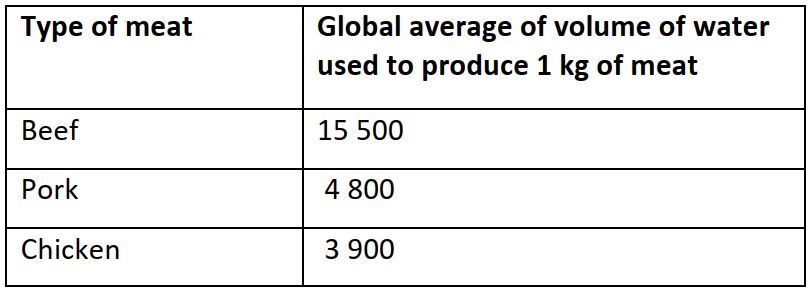|
|
Problems with water – think about your water footprint
There are problems, though, when we import from other countries, goods that have required the use of water in their production, especially when those countries suffer from clean water shortages.
Take cotton for an example. Typically, 10,850 litres of water (about 73 baths) are used to make a pair of jeans – usually in a country such India or Uzbekistan, where water is in short supply for the general population. In these countries, the contaminated wastewater from the production of cotton is usually discharged into rivers. It is no longer usable and can lead to local water shortages. In Kazakhstan, cotton production has contributed to the reduction in volume of the Aral Sea, which is now virtually dry.
The water embedded in the production of the jeans is called virtual water, which has been taken from another country’s water supply. These imports contribute to our water footprint:
You can see another example of virtual water in the food that we eat. The table below shows the water consumption to produce
1 kg of three types of meat.
Beef production has by far the largest water footprint globally. Something to think about when we buy imported beef, or beef from cattle fed on imported feedstocks. But, the large uptake of water involved can also be an issue when we buy local, grass-fed beef, although in this case at least we are using our own water.
Why does it matter?
There is only a finite amount of water available on Earth. Much of the surface of the Earth is covered in water but only a small percentage is fresh water, not all of which is readily accessible. In fact, only about 0.5% of the total water on Earth is available for human consumption. As the population increases, there is less and less water to share between all the people. An added complication is that climate change is bringing drought to some areas but flooding to others. Very many people in the world are still denied access to clean fresh water. So how we use our water on a global scale is increasingly important.
Below is a link to a short video film produced in 2016 by the UN and World Bank Group’s High Level Panel:-
You are here >>>>> |
|





